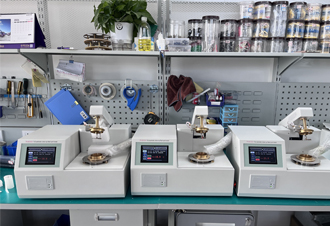 English
English



-
 Afrikaans
Afrikaans -
 Albanian
Albanian -
 Amharic
Amharic -
 Arabic
Arabic -
 Armenian
Armenian -
 Azerbaijani
Azerbaijani -
 Basque
Basque -
 Belarusian
Belarusian -
 Bengali
Bengali -
 Bosnian
Bosnian -
 Bulgarian
Bulgarian -
 Catalan
Catalan -
 Cebuano
Cebuano -
 China
China -
 China (Taiwan)
China (Taiwan) -
 Corsican
Corsican -
 Croatian
Croatian -
 Czech
Czech -
 Danish
Danish -
 Dutch
Dutch -
 English
English -
 Esperanto
Esperanto -
 Estonian
Estonian -
 Finnish
Finnish -
 French
French -
 Frisian
Frisian -
 Galician
Galician -
 Georgian
Georgian -
 German
German -
 Greek
Greek -
 Gujarati
Gujarati -
 Haitian Creole
Haitian Creole -
 hausa
hausa -
 hawaiian
hawaiian -
 Hebrew
Hebrew -
 Hindi
Hindi -
 Miao
Miao -
 Hungarian
Hungarian -
 Icelandic
Icelandic -
 igbo
igbo -
 Indonesian
Indonesian -
 irish
irish -
 Italian
Italian -
 Japanese
Japanese -
 Javanese
Javanese -
 Kannada
Kannada -
 kazakh
kazakh -
 Khmer
Khmer -
 Rwandese
Rwandese -
 Korean
Korean -
 Kurdish
Kurdish -
 Kyrgyz
Kyrgyz -
 Lao
Lao -
 Latin
Latin -
 Latvian
Latvian -
 Lithuanian
Lithuanian -
 Luxembourgish
Luxembourgish -
 Macedonian
Macedonian -
 Malgashi
Malgashi -
 Malay
Malay -
 Malayalam
Malayalam -
 Maltese
Maltese -
 Maori
Maori -
 Marathi
Marathi -
 Mongolian
Mongolian -
 Myanmar
Myanmar -
 Nepali
Nepali -
 Norwegian
Norwegian -
 Norwegian
Norwegian -
 Occitan
Occitan -
 Pashto
Pashto -
 Persian
Persian -
 Polish
Polish -
 Portuguese
Portuguese -
 Punjabi
Punjabi -
 Romanian
Romanian -
 Russian
Russian -
 Samoan
Samoan -
 Scottish Gaelic
Scottish Gaelic -
 Serbian
Serbian -
 Sesotho
Sesotho -
 Shona
Shona -
 Sindhi
Sindhi -
 Sinhala
Sinhala -
 Slovak
Slovak -
 Slovenian
Slovenian -
 Somali
Somali -
 Spanish
Spanish -
 Sundanese
Sundanese -
 Swahili
Swahili -
 Swedish
Swedish -
 Tagalog
Tagalog -
 Tajik
Tajik -
 Tamil
Tamil -
 Tatar
Tatar -
 Telugu
Telugu -
 Thai
Thai -
 Turkish
Turkish -
 Turkmen
Turkmen -
 Ukrainian
Ukrainian -
 Urdu
Urdu -
 Uighur
Uighur -
 Uzbek
Uzbek -
 Vietnamese
Vietnamese -
 Welsh
Welsh -
 Bantu
Bantu -
 Yiddish
Yiddish -
 Yoruba
Yoruba -
 Zulu
Zulu
type of test on transformer
Types of Tests on Transformers
Transformers are essential components in electrical engineering, primarily used to transfer electrical energy between circuits through electromagnetic induction. Ensuring the performance and reliability of transformers is crucial, as they are vital in power distribution and management in various industries. To achieve this, various types of tests are conducted on transformers, each designed to assess different aspects of their performance, safety, and efficiency.
1. Insulation Resistance Testing
Insulation resistance tests are critical for evaluating the electrical insulation within a transformer. This test checks whether the insulating materials are effective in preventing unwanted leakage currents. A megohmmeter is typically used to measure the resistance across the windings and to the ground. A high resistance value indicates good insulation, while a low value could signify deterioration or contamination, prompting further investigation and maintenance.
2. Transformer Turns Ratio (TTR) Test
The Transformer Turns Ratio (TTR) test determines the ratio of the number of turns in the primary winding to that in the secondary winding. This ratio is fundamental to ensuring that the transformer is functioning as designed. Any significant deviation from the expected ratio can point to issues such as shorted turns or internal damage. During the test, a specialized device applies a known voltage to the primary winding while measuring the output from the secondary winding.
3. Power Factor and Capacitance Testing
Power factor testing evaluates the efficiency of the transformer by measuring how much of the electrical energy is effectively used versus how much is lost due to dielectric losses in the insulation. A low power factor indicates poor insulation quality or that the transformer is operating under unusual conditions. Capacitance testing helps in understanding the dielectric strength and can highlight any insulation problems before they lead to failure.
type of test on transformer

4. Temperature Rise Test
Transformers generate heat during operation due to losses in the electrical components. The temperature rise test helps determine how much the transformer's temperature increases under load conditions. By measuring the temperature rise, engineers can ensure that the transformer operates within the safe limits specified for materials used in its construction. Overheating can lead to insulation breakdown and eventual failure.
5. Short Circuit and Open Circuit Tests
Short circuit and open circuit tests are fundamental to verifying a transformer's performance capabilities. The short circuit test assesses the transformer's impedance and efficiency in handling fault conditions, while the open circuit test helps to establish no-load losses and core characteristics. These tests provide insights into how a transformer will behave under various operational scenarios and are critical for design and operational safety.
6. Frequency Response Analysis (FRA)
Frequency Response Analysis (FRA) is a sophisticated test that evaluates the mechanical and electrical integrity of transformers. By applying a range of frequencies and measuring the response, FRA can identify potential internal issues, such as winding deformation or core movement, which are not detectable by conventional tests. This method provides an early warning for potential failures, making it an invaluable tool for maintenance.
Conclusion
Regular testing of transformers is essential to ensure their reliability, safety, and efficiency. Each type of test focuses on different parameters, providing a comprehensive understanding of the transformer's health. By implementing these testing methodologies, engineers can proactively manage transformers, prevent failures, and extend their operational lifespan, ultimately leading to more efficient energy distribution systems. As technology advances, testing methods will continue to evolve, improving the maintenance processes and the overall performance of transformers in electrical systems.
-
Testing Equipment Industry Sees Major Advancements in 2025: Smart & Precision Technologies Lead the WayNewsJun.06,2025
-
Applications of Direct Current Generators in Renewable Energy SystemsNewsJun.05,2025
-
Hipot Tester Calibration and Accuracy GuidelinesNewsJun.05,2025
-
Digital Circuit Breaker Analyzer Features and BenefitsNewsJun.05,2025
-
Benefits of Real-Time Power Quality Monitoring Devices for Industrial EfficiencyNewsJun.05,2025
-
Earth Fault Loop Testing in High-Rise Building Electrical SystemsNewsJun.05,2025



